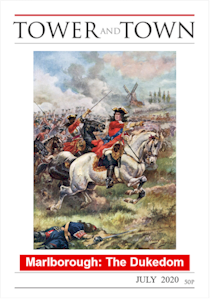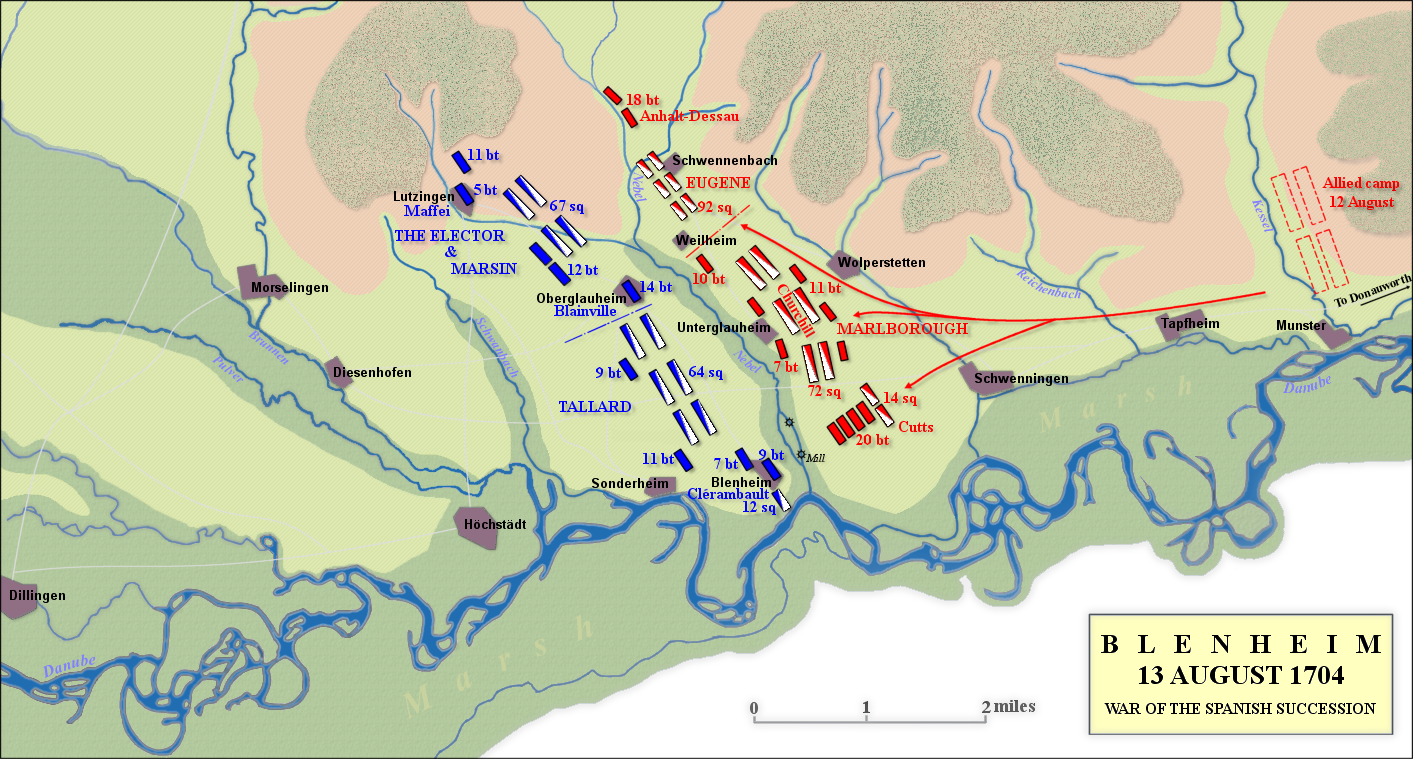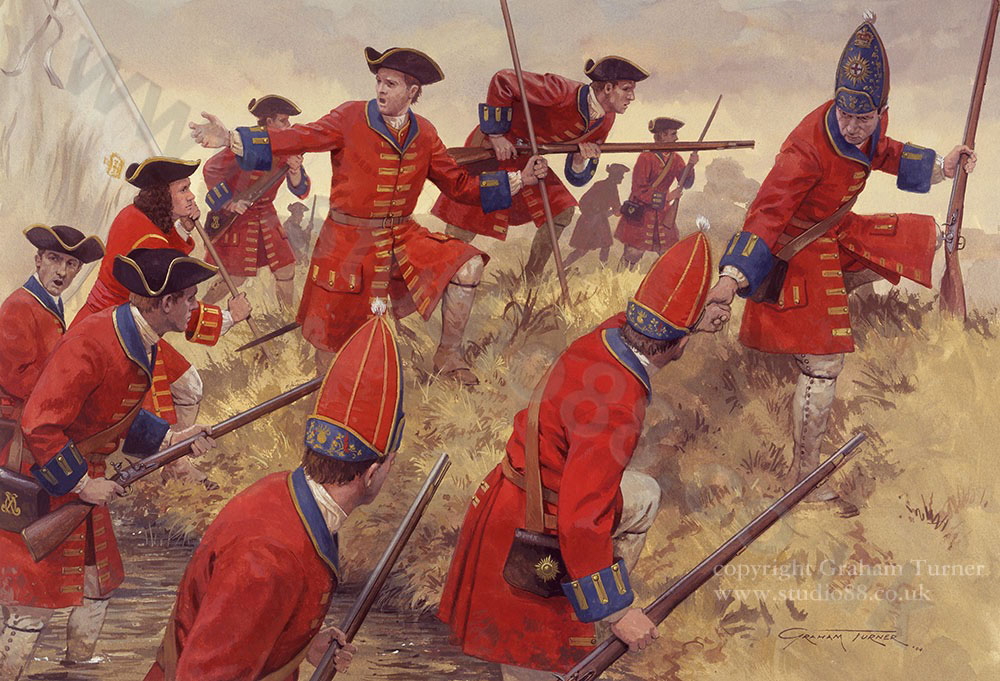

Tower and Town, July 2020 (view the full edition) (view the full edition)The March To Blenheim And The BattleThe Grand Allies facing Louis XIV comprised the Dutch Republic, England and the Austrian Hapsburgs. Obviously there is a huge distance between Holland and Austria. So when Louis' armies advanced against Vienna in early 1704, the army in Holland under the command of John Churchill (now Duke of Marlborough after a series of successful battles in the Low Countries) needed to go to the Austrians' aid. This was a march of some 700 kilometres - about 50 days without a break. It was a textbook example of logistical planning. Most of the march was up the Rhine valley, with heavy items going by water. Large numbers of carts were provided which remained the standard pattern for horse drawn carts in the Rhineland for 200 years afterwards. Enormous numbers of pairs of boots were obtained (mostly made in Raunds, Northamptonshire) and prepositioned along the line of march. (As visitors to the Merchant's House and observers of Mister Bayly will know, left and right boots were then identical; left and right handed boots were not produced for another 100 years). Churchill needed to be quite wily as the Dutch government did not want its troops to travel so far from home since the French still retained an army in the north east able to threaten Holland  Arriving in Bavaria, the Austrian and Anglo-Dutch armies combined and engaged the French at Blenheim (or Hochstadt to the French and Germans) close to the village of Blindheim (from which the anglicisation of 'Blenheim' derives) in Bavaria on the left bank of the Danube. Each side numbered just over 50,000. An early start by the armies of the Grand Alliance allowed them to cross the stream and marshy ground which separated the armies and catch the French unprepared. The Franco-Bavarian army was in consequence comprehensively defeated and their Commander in Chief Marshal Tallard captured and held in Newdigate House, Nottingham till 1711.  ©Graham Turner, Studio88 Alexander Kirk-Wilson |